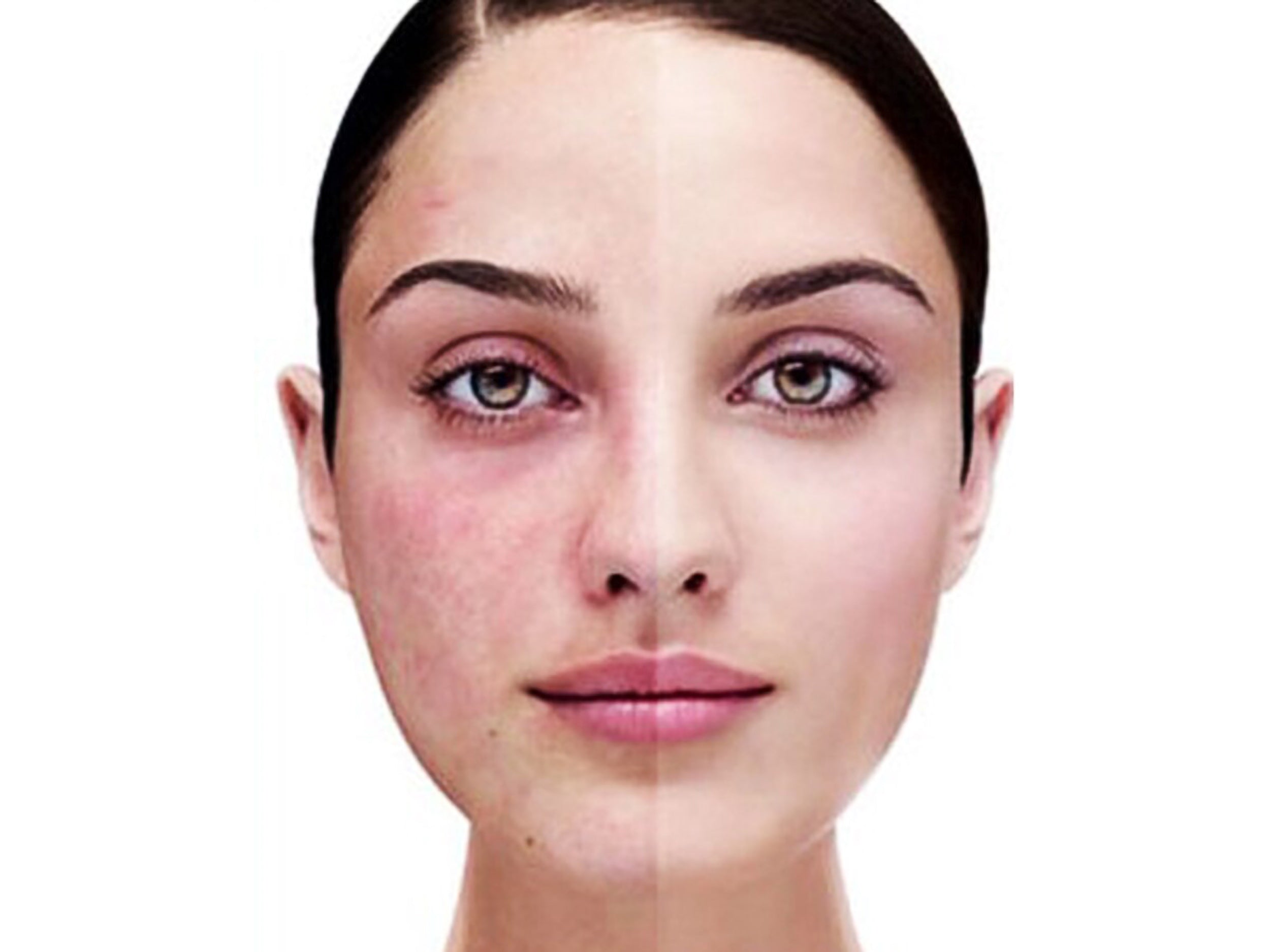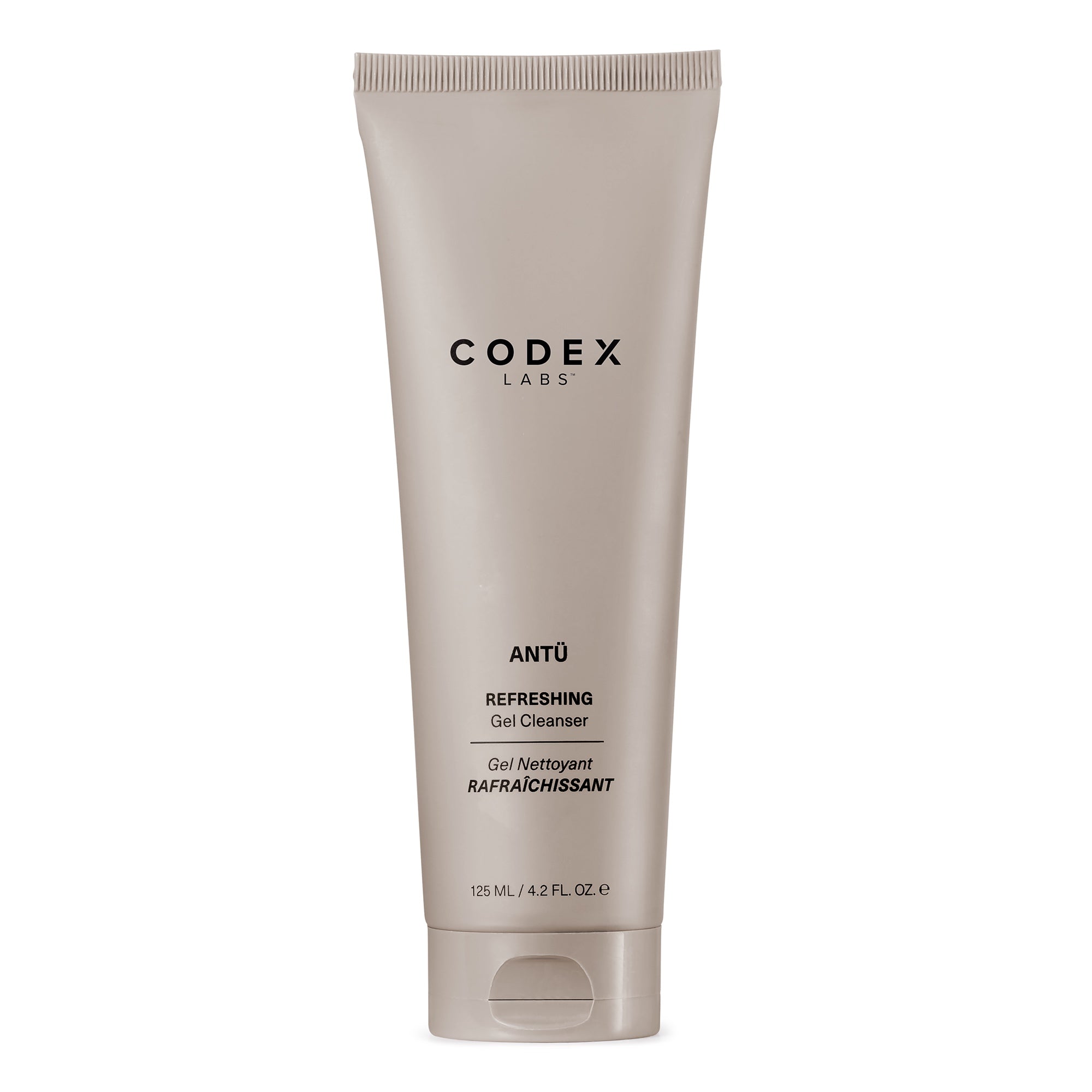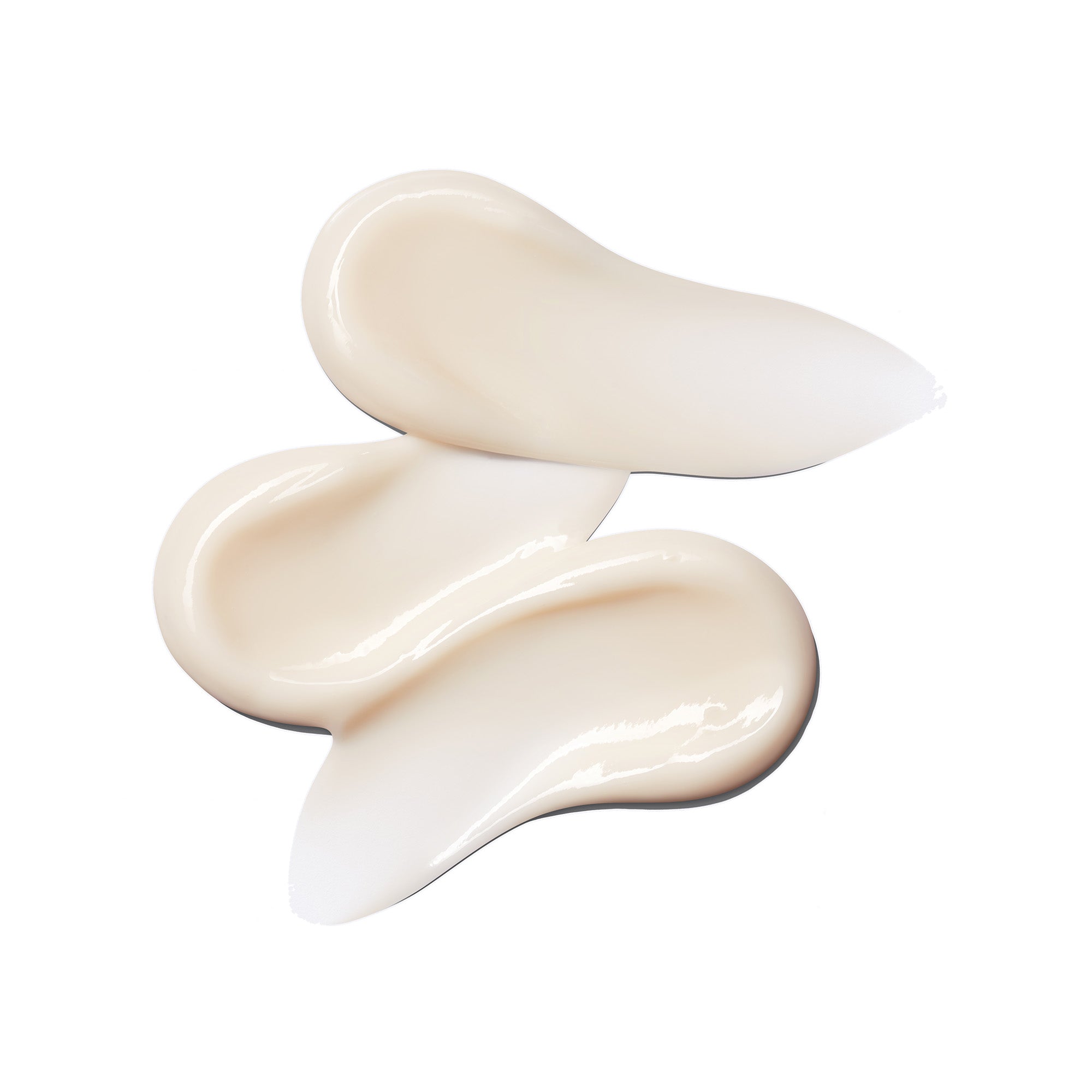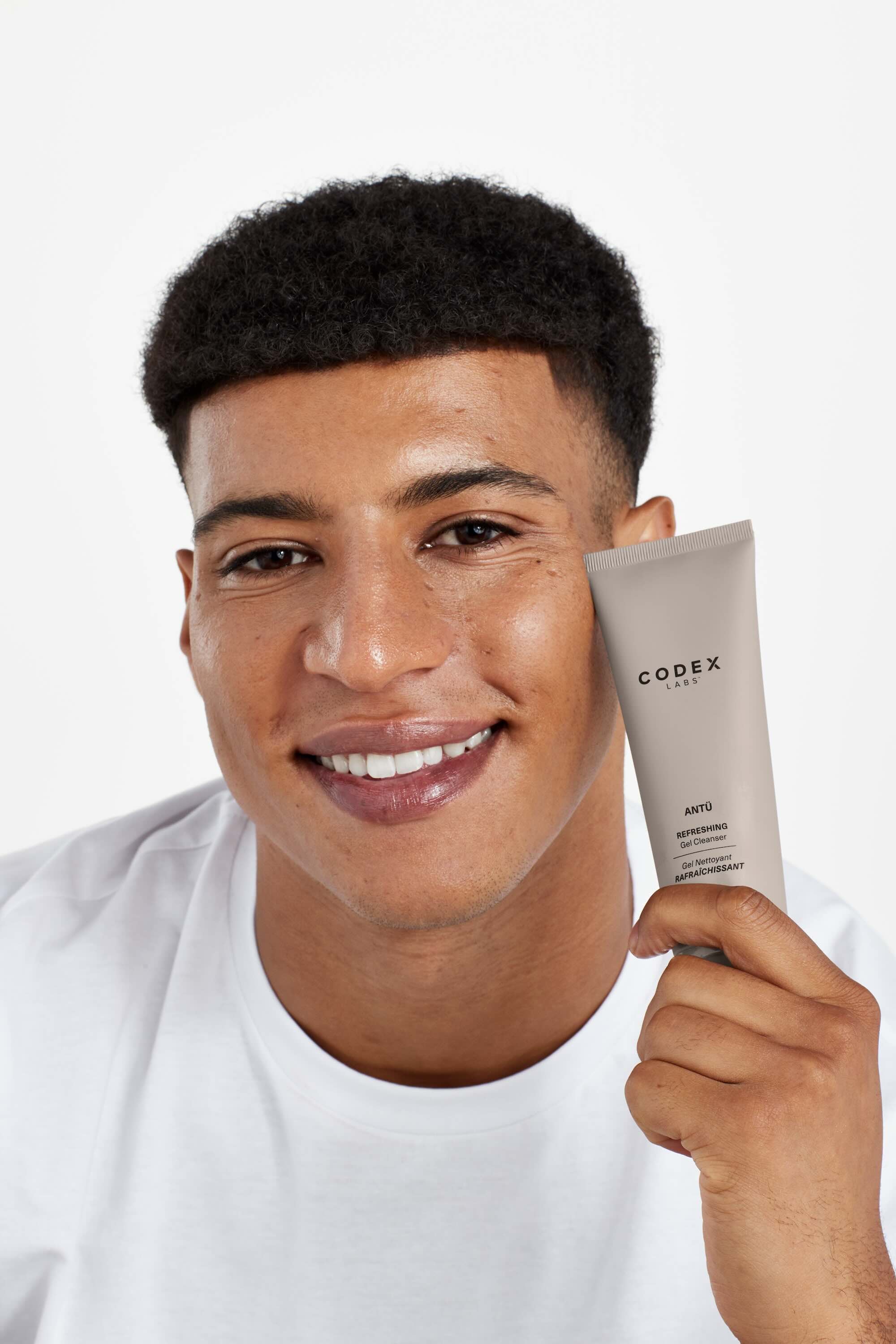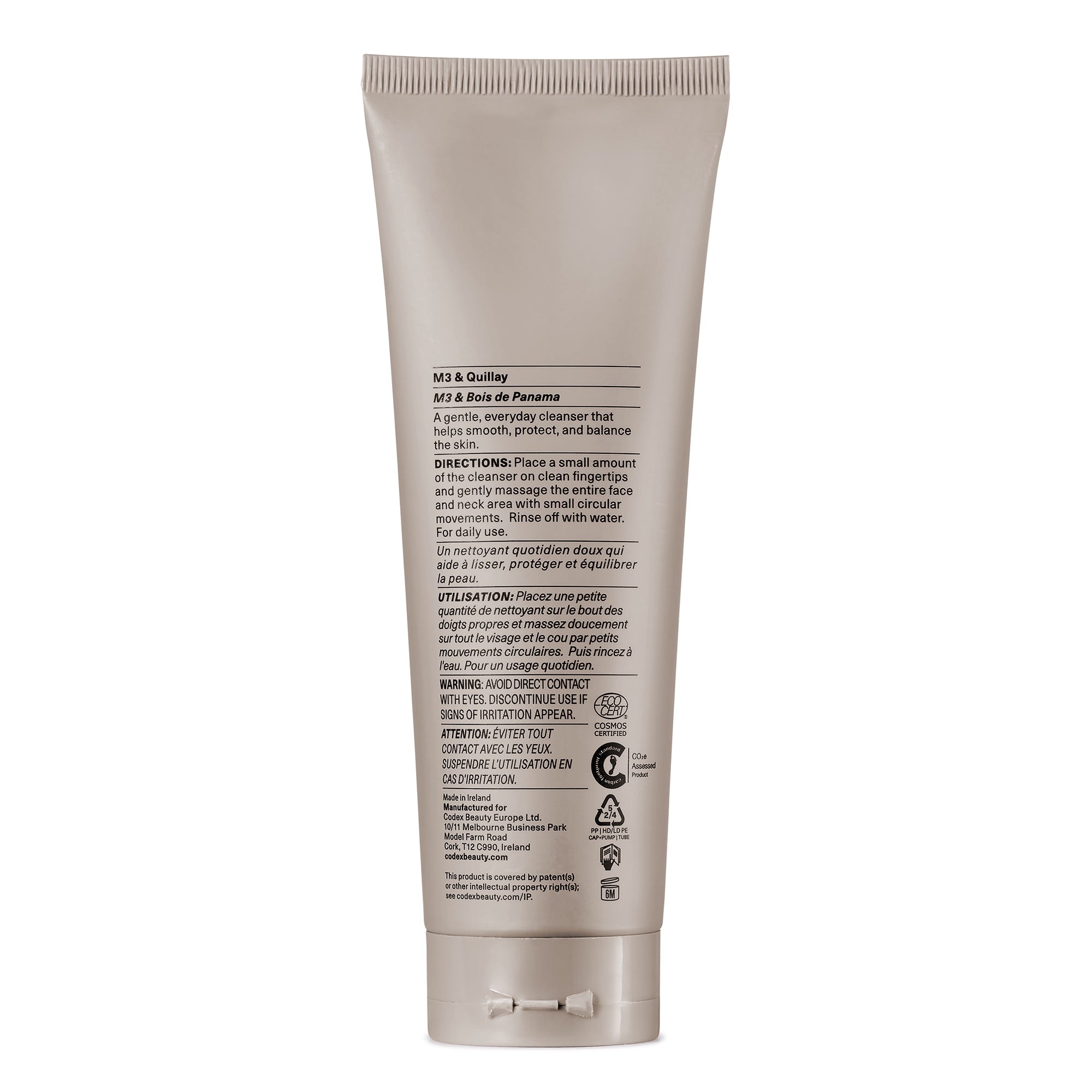Rosacea is a common skin disorder that affects millions of people worldwide. It can cause redness, bumps, and severe skin irritation in the form of a burning or stinging sensation on the face which can be both uncomfortable and frustrating to deal with. Understanding its causes and symptoms is important for treatment and keeping it from getting worse. By the end of this post, you will have a better understanding of rosacea and how to manage it properly.

What is Rosacea?
Rosacea is like a fire on your face. Just like a fire, it can cause redness, warmth, and inflammation on your skin. It can also make your skin look and feel rough and bumpy/pimply. It usually affects the face, especially the cheeks, nose, and forehead. People with rosacea may also experience dryness, itching, and sensitivity to certain products or environmental factors. Some people with rosacea may also experience eye problems. [1]
What Causes Rosacea?
While research is currently ongoing to determine whether it is an autoimmune condition, the exact cause of rosacea is still unknown. There are, however, several factors that may contribute to its development. [2] These include:
- Abnormalities in the Immune System: Research suggests that people with rosacea may have abnormalities in their immune system which can cause inflammation and redness in the skin.
- Genetics: Rosacea tends to run in families, suggesting that there may be a genetic component to the condition. People with fair skin and a family history of rosacea appear to have an increased risk of developing the condition.
- Bacteria: Some studies have suggested that an overgrowth of certain bacteria on the skin which triggers a response by your body’s immune system may contribute to the development of rosacea.
- Environmental Triggers: Certain environmental factors such as sun exposure, hot weather, wind, and cold temperatures can trigger or worsen rosacea symptoms.
- Foods and Beverages: Certain foods (spicy) and beverages (coffee, tea, and alcohol) can also trigger or worsen rosacea symptoms.
- Blood Vessel Abnormalities: Rosacea may also be related to abnormalities in blood vessels in the face which can cause redness and flushing.
It’s important to note that not all people with rosacea have the same underlying causes, and what triggers one person’s rosacea symptoms may not affect another person. However, understanding the potential causes of rosacea can help you take steps to manage your symptoms and avoid triggers.
What are the Symptoms of Rosacea?
There are several signs and symptoms that may indicate that you have rosacea. [3] They include:
- Persistent Redness: If you have redness on your cheeks, nose, chin, or forehead that lasts for long periods of time, it may be a sign of rosacea.
- Bumps and Pimples: Rosacea can cause small, red, pus-filled bumps on your skin. These may look like acne, but they are not the same thing.
- Flushing: If you blush or flush easily, this may be a sign of rosacea. Your skin may turn red after exercising or drinking alcohol, or when you are feeling embarrassed or stressed.
- Visible Blood Vessels: Rosacea can cause small blood vessels to become visible on your skin. These may appear as thin, red lines.
- Eye Irritation: In some cases, rosacea can cause eye irritation such as dryness, burning, or itching.
How is Rosacea Treated?
Although there is currently no cure for rosacea, there are several treatments available that can help manage its symptoms. [3] Treatment options for managing rosacea include:
- Use a Gentle Cleanser: Choose gentle, non-foaming cleansers certified by the National Psoriasis Foundation that are specifically designed for sensitive skin like ANTU® REFRESHING GEL CLEANSER with moisture-locking ingredients like Quillay and Sodium Cocoyl Glutamate that protect your skin from drying out. Also, avoid using hot water and harsh scrubbing motions which can irritate the skin and worsen your rosacea symptoms.
- Look for Soothing Ingredients: Look for skincare products that contain soothing ingredients like BIA® SEAWEED SOAK with antioxidant rich Fucus Serratus Seaweed that helps calm irritated skin.
- Avoid Irritating Ingredients: Avoid using skincare products that contain harsh ingredients like alcohol, fragrances, and acids. These can irritate the skin and trigger a rosacea flare-up.
- Moisturize: Use gentle, non-comedogenic moisturizers certified by the National Psoriasis Foundation to keep your skin hydrated and protected like ANTU® SKIN BARRIER MOISTURIZER with its hydrating hero ingredient hyaluronic acid that effectively hydrates your skin plus entadine, a potent ingredient that helps protect skin from sun exposure, a known trigger for rosacea. If you’re looking to really turbo-charge the health and functionality of your skin barrier, you may want to consider using the ANTU® SKIN BARRIER NIGHT CREAM before going to bed. These skin barrier-focused products containing the patented ANTUCOMPLEX® have been specifically engineered for sensitive skin, and clinically proven to both nourish and strengthen the skin barrier while you sleep. And since each product has been awarded the National Psoriasis Foundation Seal of Recognition, you can rest assured that they will not irritate your sensitive skin.
- Increase skin microcirculation: Skin microcirculation is important for maintaining healthy skin barrier functionality due to its role in delivering oxygen and nutrients to skin cells. Antioxidants help improve skin microcirculation by protecting blood vessels in the skin from damage caused by free radicals created by daily exposure to the sun’s harmful UV rays and pollution. These free radicals can be effectively neutralized by antioxidants like those found in ANTU® SKIN BARRIER SERUM with its patented, antioxidant-rich ANTUCOMPLEX®. Daily use of this clinically proven skin barrier-reinforcing powerhouse will not only neutralize free radicals already present in your skin, but also protect your skin from coming in contact with free radical-forming air pollutants. A BOGO offer your skin can’t refuse!
- Use Sun Protection: Sun exposure is a common trigger for rosacea symptoms, so it’s important to use a sunscreen having an SPF of at least 30 that contains zinc oxide or titanium dioxide which are less likely to irritate the skin.
- Lifestyle Changes: Making certain lifestyle changes can also help manage your rosacea symptoms. For example, avoiding triggers like sun exposure, spicy foods, and alcohol can help prevent flare-ups. You may also want to switch to a gentle skin care routine and use products specifically designed for sensitive skin like the ANTU® COLLECTION.
As is seen in the before and after pictures below, the use of products such as those referenced above can have a profound effect on reducing the appearance of redness associated with rosacea.
BEFORE

AFTER

Conclusion
Rosacea can be a challenging skin condition to deal with, but by understanding what causes it and how to manage its symptoms, you can take control of your skin health. Think of your skin like a garden or canvas, and rosacea as a weed or artist’s brush that needs to be managed and controlled. By working with your healthcare provider and making simple skincare and lifestyle changes, you can effectively manage your rosacea and enjoy healthy, clear skin.
References:

